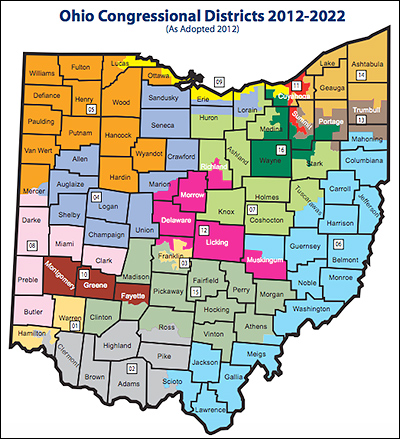By Jim Ellis — Sept. 21, 2022
Senate
Arkansas: Rare Data — It has been assumed that Sen. John Boozman (R) secured a third term in office when he won his contested Republican primary back in March. A Hendrix College/Talk Business Net survey, from the organizations that regularly sponsor Arkansas political polls, finds Boozman in predictably strong shape for the November election. The survey (Sept. 12; 835 likely Arkansas general election voters) gives the senator a 44-31 percent advantage over civil rights activist and realtor Natalie James (D).Arizona: Two Pollsters, Same Tight Result — The Trafalgar Group’s new Arizona survey (Sept. 14-17; 1,080 likely Arizona general election voters; multiple sampling techniques) sees Sen. Mark Kelly’s (D) previously large lead dwindling to 47-45 percent over Republican venture capitalist Blake Masters.
Earlier in September, Emerson College (Sept. 6-7; 627 likely Arizona general election voters; multiple sampling techniques) arrived at exactly the same conclusion: Sen. Kelly leading 47-45 percent. Remembering that the 2020 Senate race closed quickly against Kelly, limiting him to a 51-49 percent victory over appointed Sen. Martha McSally (R) after leading by an average margin of 6.6 percent through 21 October polls according to the Real Clear Politics polling archives, the 2022 race looks to be headed toward a very interesting conclusion.
House
IA-3: An Unsurprising Dead Heat — In one of America’s tightest congressional districts, Rep. Cindy Axne’s (D-Des Moines) campaign just made an interesting move. The congresswoman’s political leadership yesterday released Rep. Axne’s new internal Impact Research survey (Sept. 7-11; 500 likely IA-3 voters; live interview & text) that reports she and her Republican challenger, state Sen. Zach Nunn (R-Bondurant), are tied at 47 percent apiece.
The point of releasing the poll, however, is to show emphasis on the abortion issue among the respondents, which the campaign strategists believe will swing voters to the Democratic incumbent. Even when knowing Sen. Nunn’s abortion position, however, the best Rep. Axne can do is tie, suggesting that despite deep disagreements over the issue in the central Iowa region it does not appear to be bringing any more voters into Axne’s camp. Her 47 percent support figure quoted in this poll is consistent with her two 49 percent victory percentages in 2020 and 2018.
Governor
Minnesota: Gov. Walz With Comfortable Lead — In a race where the polling has been inconsistent during the past few months, Mason-Dixon Polling & Strategy has released a new ballot test result from their research study conducted for the Minneapolis Star Review and Minnesota Public Radio (Sept. 12-14; 800 likely Minnesota general election voters; live interview). The M-D conclusion finds Gov. Tim Walz (D) leading former state Sen. Scott Jensen (R), 48-41 percent.
The governor’s job approval score is 52:42 percent favorable to unfavorable. President Biden remains upside-down in Minnesota on his favorability index, but the number is improving. In this M-D poll, 46 percent approve of the job the president is doing and 49 percent disapprove.
Ohio: Conflicting Surveys — We are seeing places around the country where pollsters are producing very diverse ballot test results even when testing an electorate within the same time realm. The Ohio governor’s race is another such example. A Civiqs organization poll, surveying for the Daily Kos Elections site (Sept. 10-13; 780 likely Ohio general election voters; online) projects a close race developing between Gov. Mike DeWine (R) and Dayton Mayor Nan Whaley (D). The Civiqs ballot test projects Gov. DeWine to hold only a 44-41 percent edge.
Emerson College, however, sees a much different margin when polling within exactly the same time frame. Their poll (Sept. 10-13; 1,000 likely Ohio general election voters; multiple sampling techniques) yields the governor a wide 50-33 percent spread over Mayor Whaley. The latter poll result is more consistent with other publicly released surveys for this campaign.








